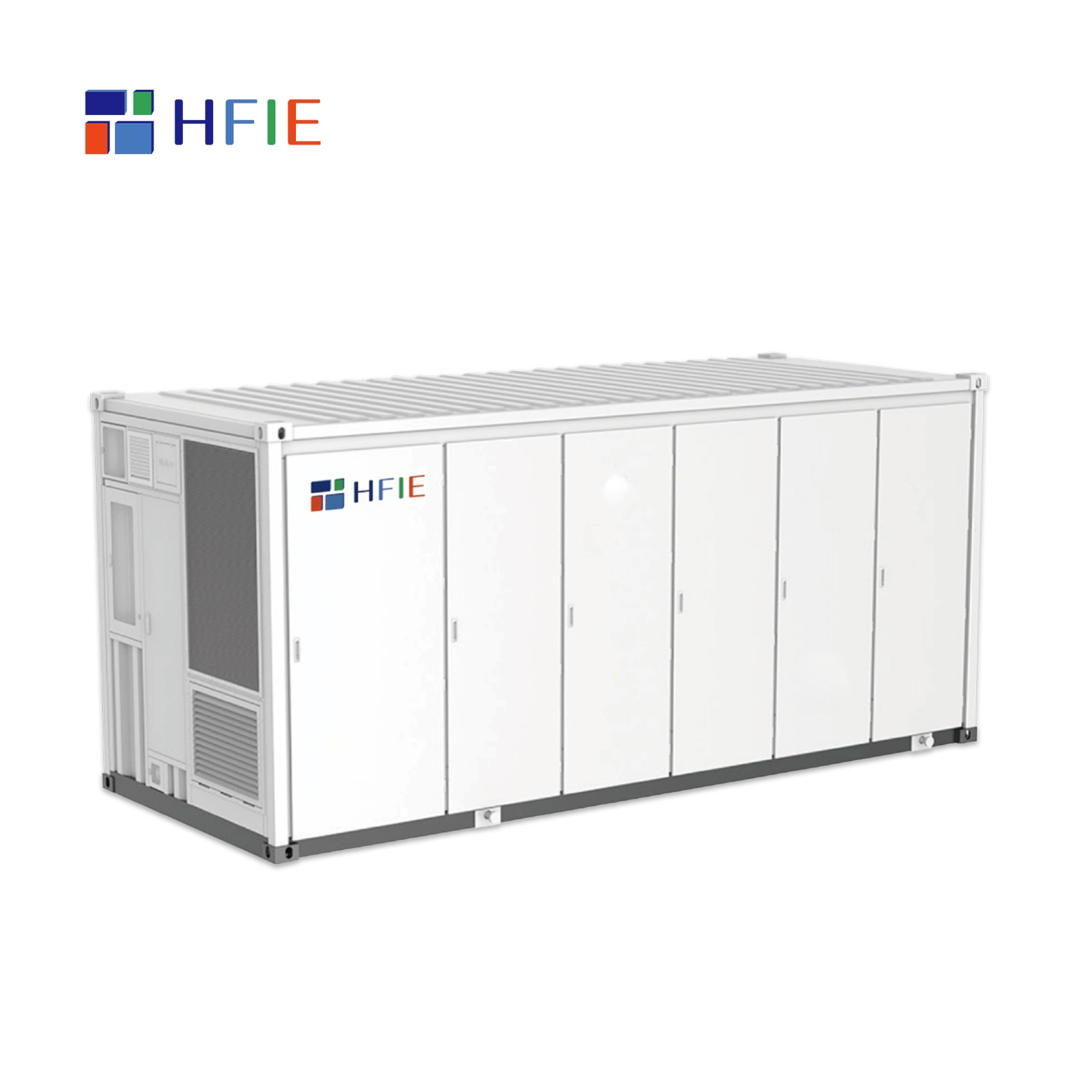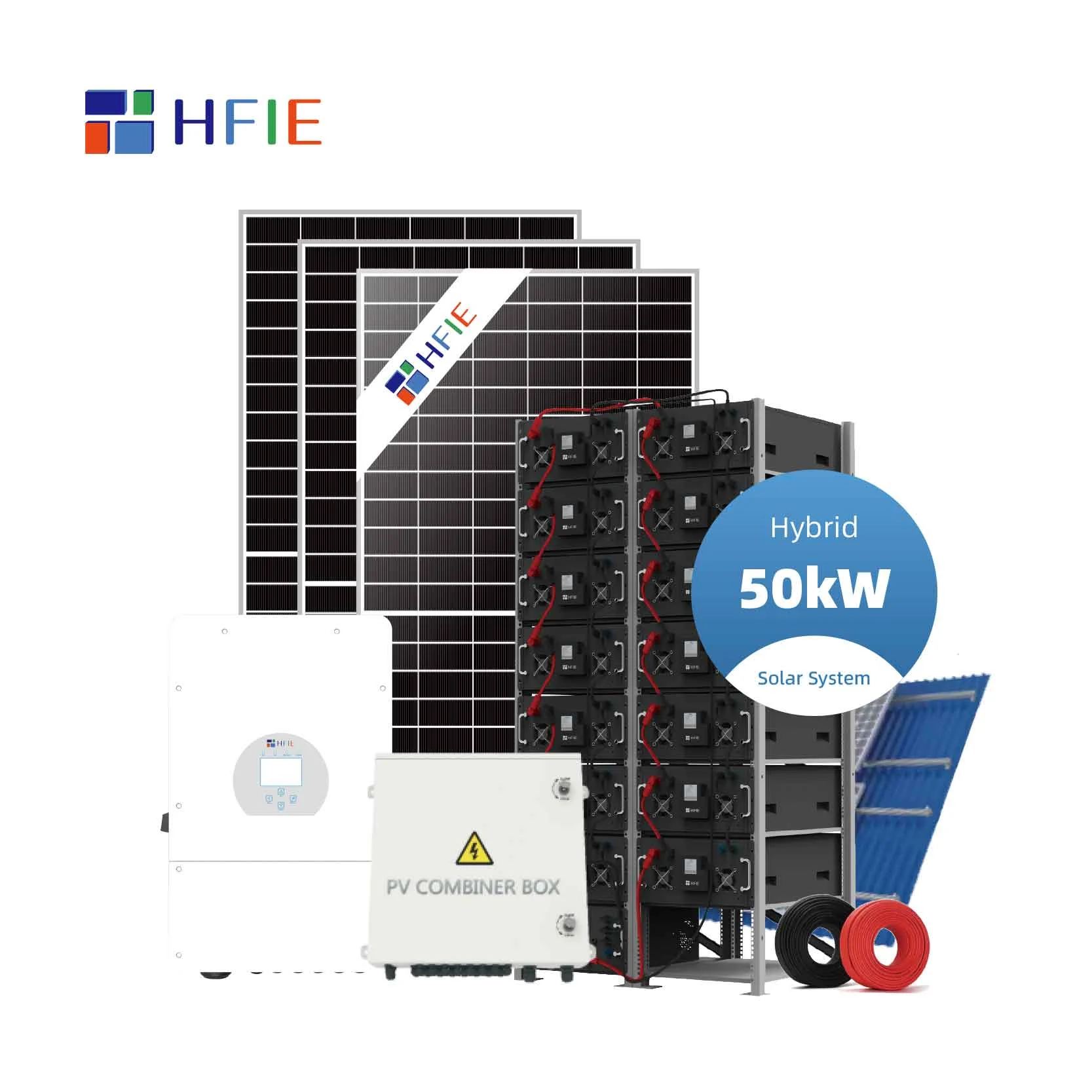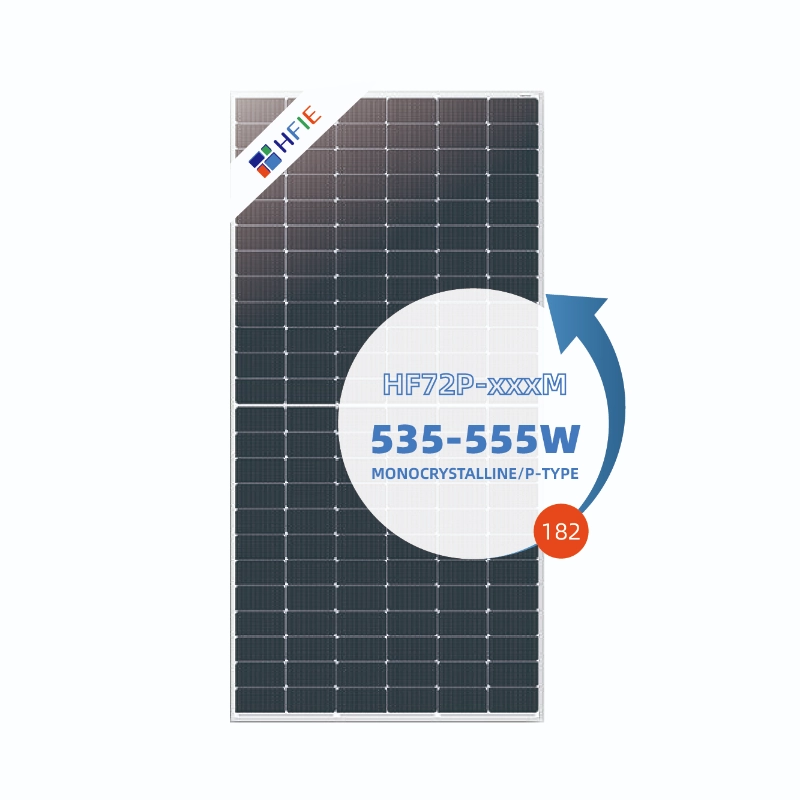As the world accelerates its transition to renewable energy, 2025 marks a pivotal year for the energy storage sector. Driven by technological advancements, policy support, and increasing demand for grid stability, energy storage systems are becoming integral to the global energy infrastructure.
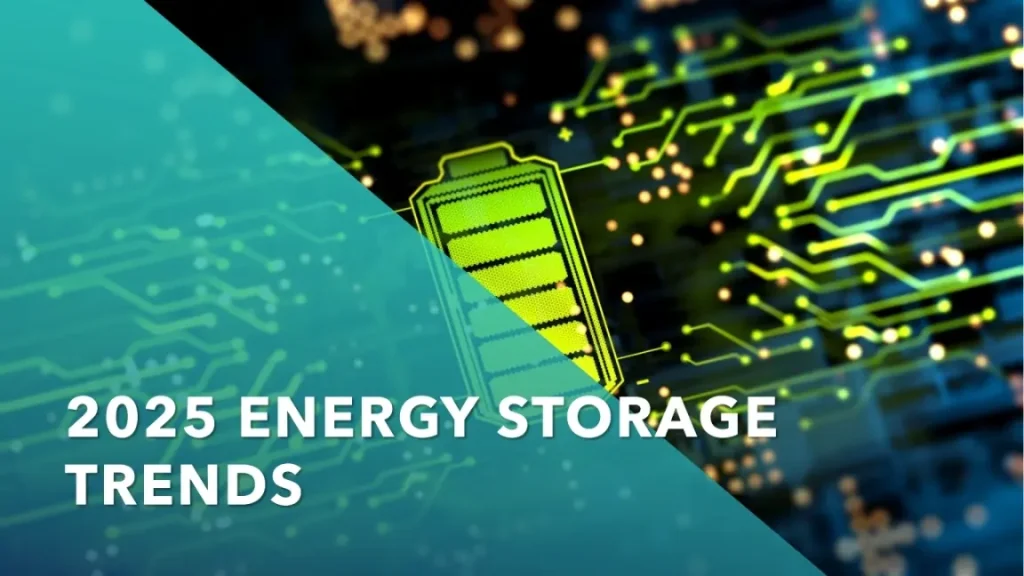
Technological Innovations Leading the Charge
Sodium-Ion Batteries Gain Traction
Sodium-ion batteries are emerging as a promising alternative to lithium-ion technology. With abundant sodium resources and lower production costs, these batteries offer a sustainable and cost-effective solution for large-scale energy storage. India, for instance, is investing in sodium-ion technology to leverage its domestic resources and reduce reliance on imported lithium.
Solid-State Batteries on the Horizon
Solid-state batteries, utilizing solid electrolytes instead of liquid ones, are gaining attention for their enhanced safety and higher energy densities. While commercialization is anticipated around 2028, ongoing research and development in 2025 are setting the stage for their future adoption in both grid storage and electric vehicles.
Hybrid Energy Storage Systems
Combining different storage technologies, such as lithium-ion batteries with supercapacitors, hybrid systems are being developed to meet diverse energy demands. These systems offer rapid response times and long-duration storage capabilities, making them ideal for grid balancing and renewable integration.

Global Market Expansion
Asia-Pacific Leading the Market
The Asia-Pacific region continues to dominate the energy storage market, projected to reach $6.01 billion in 2025, accounting for 54% of global market value. Countries like China, Japan, South Korea, and Australia are investing heavily in energy storage to enhance grid flexibility and support renewable energy integration. United States’ Record-Breaking Growth
In the United States, the energy storage market experienced unprecedented growth in 2024, adding 3.8 GW in the third quarter alone. This momentum is expected to continue, with projections indicating over 74 GW of installations between 2024 and 2028. Federal incentives, such as the Inflation Reduction Act, have played a significant role in this expansion.
Australia’s Investment Surge
Australia is witnessing a significant surge in battery storage investments, with $2.4 billion committed in the first quarter of 2025. Notable projects include Victoria’s 350 MW Wooreen system. These investments are crucial for the country’s goal of achieving 82% renewable electricity by 2030.
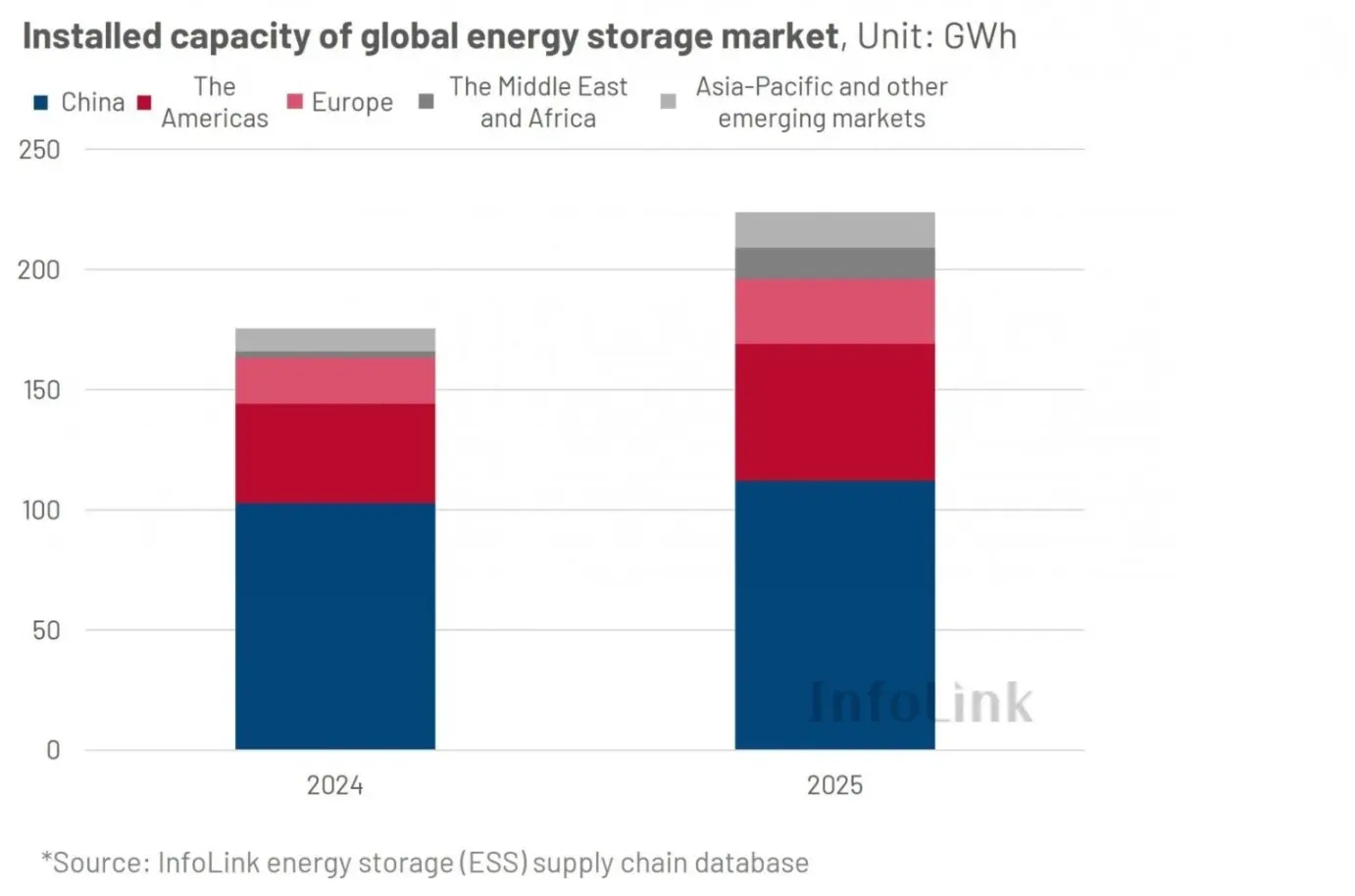
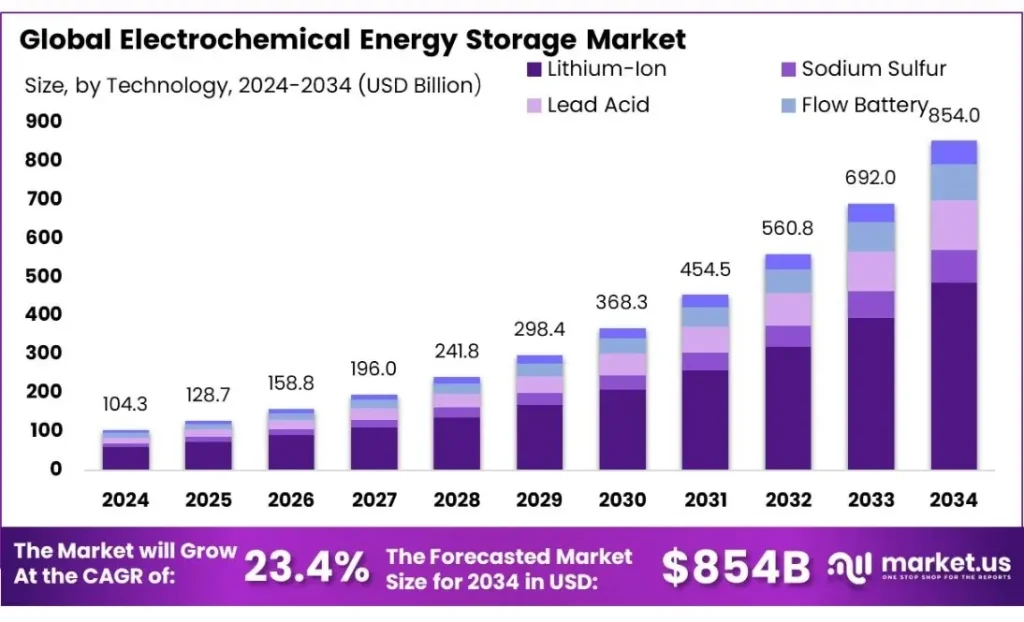
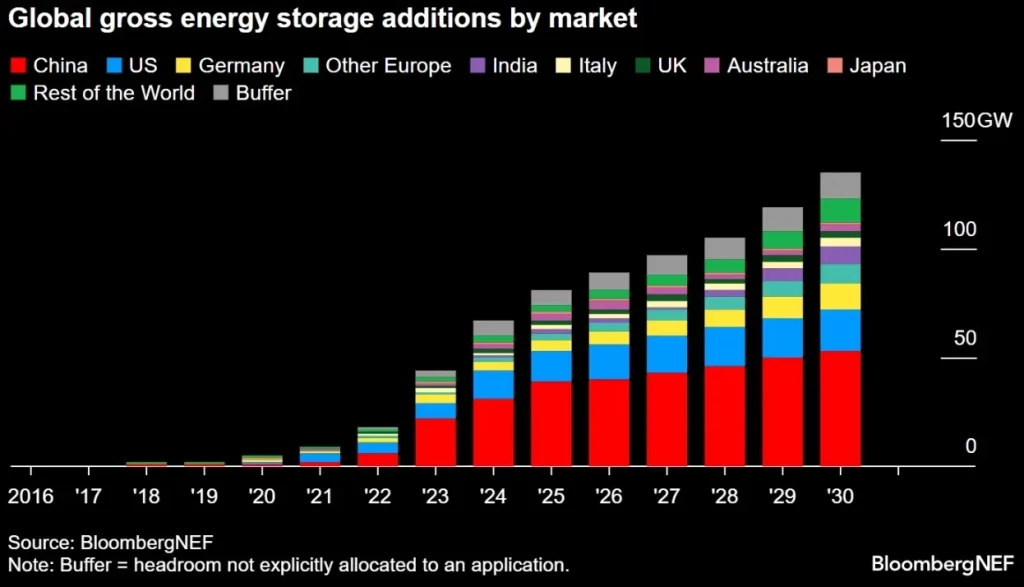
Emerging Markets and Technologies
Flow Batteries and Long-Duration Storage
Flow batteries, such as vanadium redox systems, are gaining attention for their scalability and suitability for long-duration storage. These technologies are particularly beneficial for balancing intermittent renewable sources like solar and wind.
Green Hydrogen Integration
Green hydrogen production, powered by surplus renewable energy, is being integrated into energy storage infrastructure. This approach offers a clean and sustainable solution for storing and utilizing excess energy, contributing to grid stability and decarbonization efforts.
Artificial Intelligence in Energy Management
Artificial intelligence (AI) and machine learning are increasingly being employed to optimize energy storage and distribution. Smart energy management systems analyze real-time data to improve efficiency, reduce costs, and predict energy demand, ensuring effective utilization of stored energy.
Strategic Shifts and Supply Chain Considerations
Reducing Dependency on Lithium
The global reliance on lithium, particularly from China, poses strategic vulnerabilities. To mitigate these risks, countries like the United States are exploring alternatives such as organic flow batteries and sodium-ion technologies, aiming to enhance supply chain resilience and reduce dependency on critical minerals.
Policy Support and Regulatory Frameworks
Governments worldwide are implementing policies and regulatory frameworks to support energy storage adoption. In the European Union, initiatives like the European Battery Alliance aim to create a competitive and sustainable battery value chain, while the U.S. Department of Energy is funding pilot-scale energy storage projects utilizing non-lithium technologies.
Conclusion
The energy storage sector in 2025 is characterized by rapid technological advancements, significant market expansion, and strategic shifts aimed at enhancing sustainability and resilience. As countries invest in diverse storage solutions and supportive policies, energy storage is poised to play a pivotal role in the global transition to a clean and reliable energy future.







